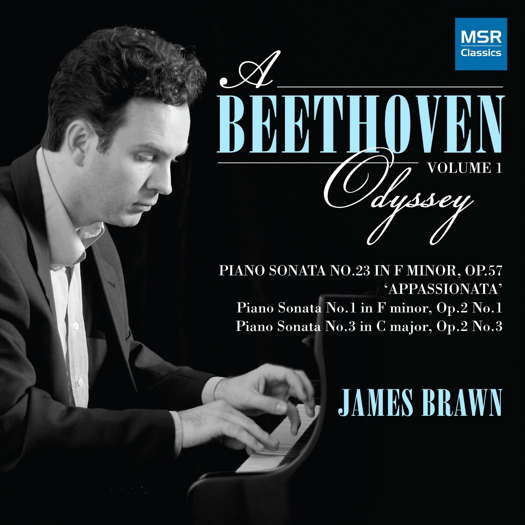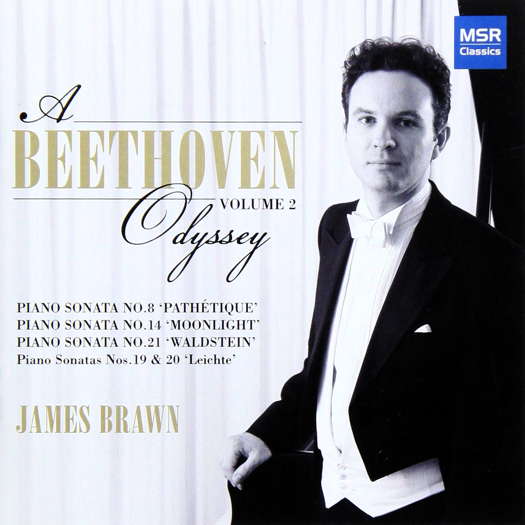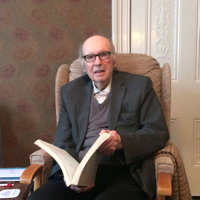 SPONSORED: Profile. A Gold Mine - Roderic Dunnett visits Birmingham to talk to John Joubert.
SPONSORED: Profile. A Gold Mine - Roderic Dunnett visits Birmingham to talk to John Joubert.
All sponsored features >>
A Touch of Verdi in Rossini's Last Work
GIUSEPPE PENNISI listens to Opera Roma's grand performance of Petite Messe Solennelle in Rome
Rossini's Petite Messe Solennelle has often been reviewed in this magazine, most recently on 11 August 2020, based on a 6 August performance at the Rossini Opera Festival in Pesaro. That review highlit both the background of Rossini's last composition as well as its main performance history. Therefore, I refer readers to that article. It is useful to recall that there are three main versions of the Petite Messe Solennelle. The original composition was written for twelve voices - four soloist, and a chorus of eight, two pianos and a harmonium, discussed in Music & Vision Magazine on 31 May 2011. Rossini, then, created a version for a twenty-two-piece orchestra and a small chorus, and finally a version for an orchestra of fifty-five with a large chorus. In Pesaro, I listened to the second of these three versions.
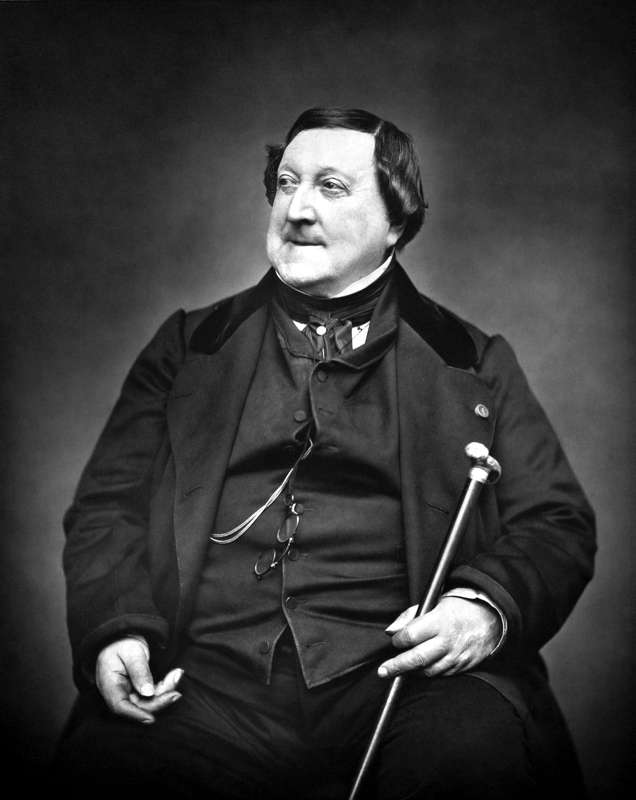
Gioacchino Rossini (1792-1868) in 1865
On 1 October 2020, in Teatro dell'Opera di Roma, the third and last version was performed as final concert of a September 'season' which focussed on chamber music in a theatre arranged for a third of its normal audience as well for social distancing among the performers. On the stage, the orchestra and the chorus members were at a distance from each other and that several chorus members were housed in the first and second tier boxes.
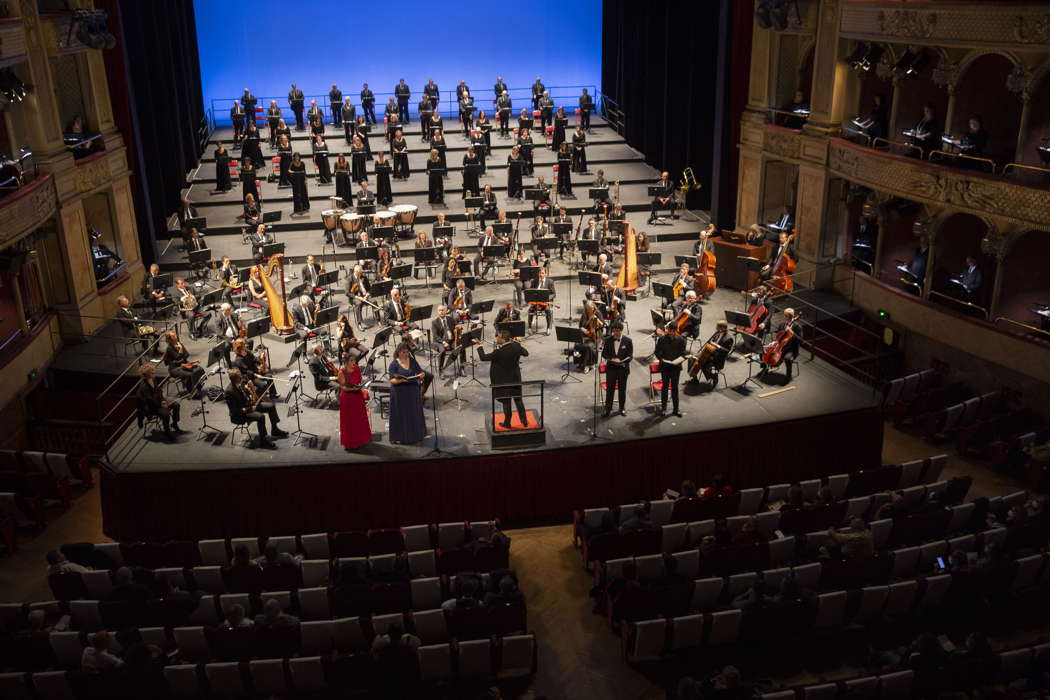
Rossini's 'Petite Messe Solennelle' at Teatro dell'Opera di Roma. Photo © 2020 Yasuko Kageyama
This gave very good stereophonic effects because their voices enveloped the whole audience. As a matter of fact, the first version of Petite Messe sounds like an intimate prayer by an aged Rossini knowing that his death was not far away. The second looks like a composition to be performed in a large church. This third version is almost a grand opera such as those in fashion in France at that time.
The 1 October Rome performance had a touch of Verdi. In 1863-65 when the work was composed and orchestrated, Verdi's operas were well-known in Paris and Rossini was certainly familiar with the writing of his younger compatriot. More specifically, in the pit there was Jader Bignamini who has the reputation of being one of the best Verdi conductors now on the market; at the age of forty four, he has had a successful career in Italy and abroad. Chorus master Roberto Gabbiani is another Verdi old hand.
The orchestra and chorus were the main protagonists of the evening. I was in box 16 on the first tier, a very central position. From there I could see a magnificent orchestra with two harps and an organ and I was surrounded by part of the chorus. The direction of both chorus and orchestra was, at the same time, dramatic and pious. The service became a drama of the sacrifice of God's son and a prayer to the Almighty for world redemption - a grandiose and, at the same time, deeply moving effect.
In this rendering of Petite Messe, the cellos, winds as well as the organ were particularly effective in providing the dramatic and, at the same time, profound mystic sense of the score. The chorus provided the audience with a grand initial Kyrie and a superb Agnus Dei.
The soloists were members of Teatro dell'Opera's Progetto Fabbrica, the special program to prepare young singers for an operatic career. It is not a general opera training school because it is tailored and fitted to each member of the Progetto.
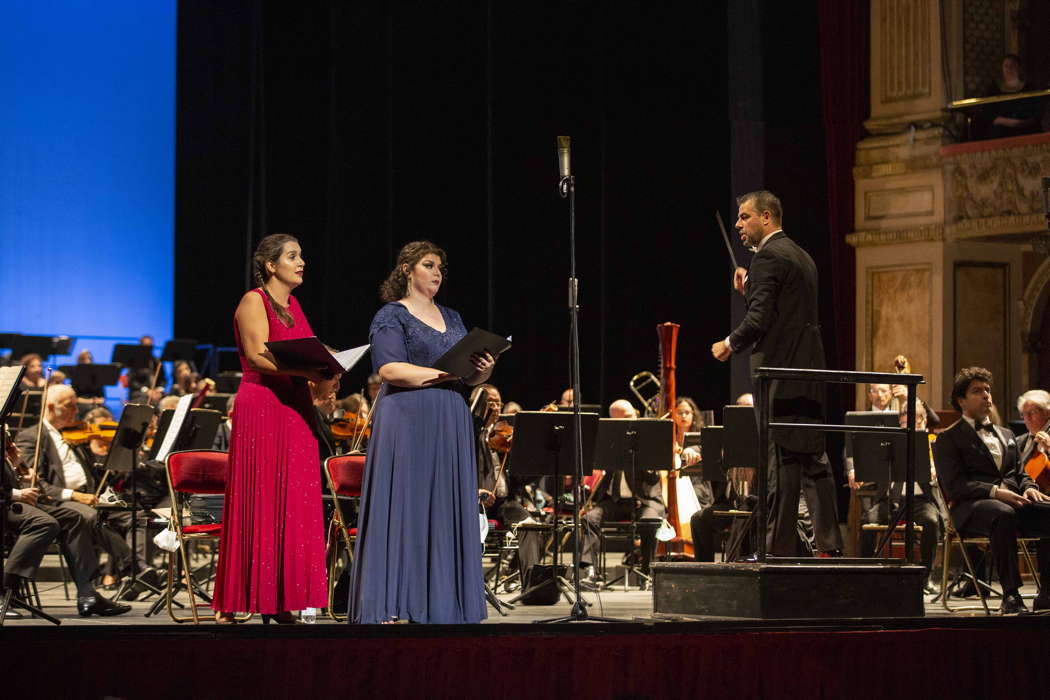
Agnieszka Jadwiga Grochala, Irene Savignano and Jader Bignamini in Rossini's 'Petite Messe Solennelle' at Teatro dell'Opera di Roma. Photo © 2020 Yasuko Kageyama
They were the soprano Agnieszka Jadwiga Crochala, mezzo Irene Savignano, tenor Rodrigo Ortiz and bass Alessandro Della Morte. They were generally quite good and promising, especially the soprano and the mezzo in their duets. We wish a successful career to all of them.
The Petite Messe was the last of a series of early Autumn concerts organized either in the Teatro dell'Opera main house - Teatro Costanzi - or in the new Congress and Concerts Hall La Nuvola (The Cloud) in a district named EUR, some ten miles away from the city centre. La Nuvola has a very innovative architecture.
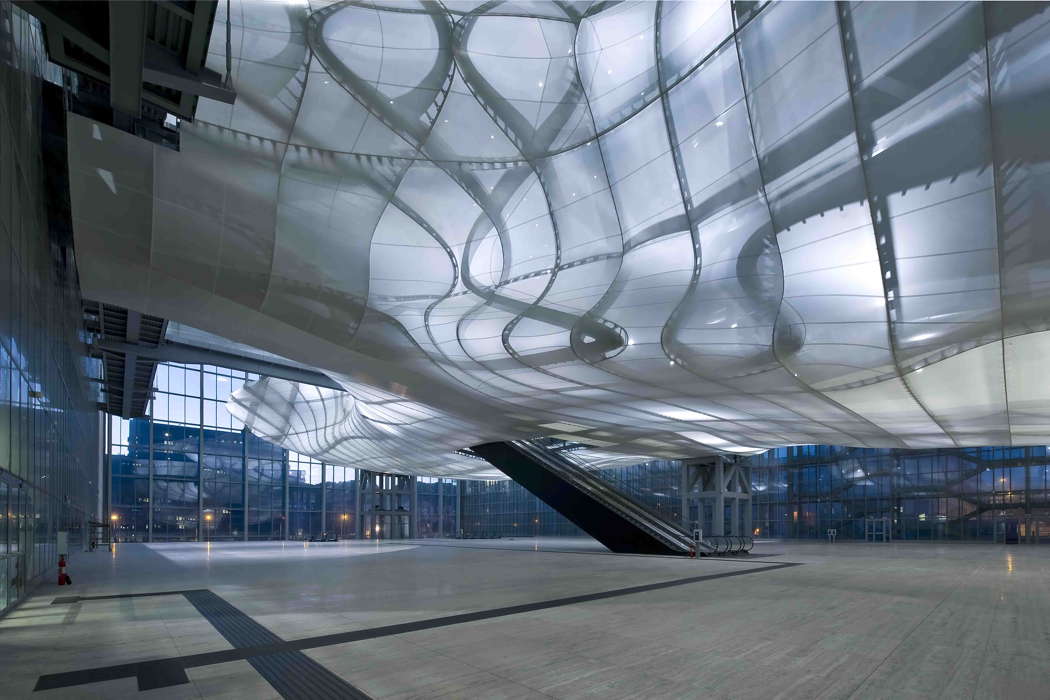
La Nuvola (The Cloud) Congress and Concerts Hall. Photo © 2016 Studio Maggi/Moreno Maggi
The concerts in the main house feature music by Vivaldi and Verdi as well as low prices. The concerts in La Nuvola had programs with music by Gluck, Bellini, Mozart, Rossini and Donizetti. They were free but tickets had to booked on line; they were sold out in less than half a hour.
The performers were the orchestra and chorus of the Teatro dell'Opera, conductors such as Paolo Arrivabeni, Gianluca Capuano and Fabio Biondi and singers from Progetto Fabbrica.
These initiatives were the Teatro dell'Opera's response to the pandemic and the economic crisis: music as medicine.
Copyright © 3 October 2020
Giuseppe Pennisi,
Rome, Italy

ROSSINI'S PETITE MESSE SOLENNELLE IN PESARO
FURTHER INFORMATION ABOUT GIOACCHINO ROSSINI
FURTHER ARTICLES ABOUT COVID-19 AND ITS EFFECTS


